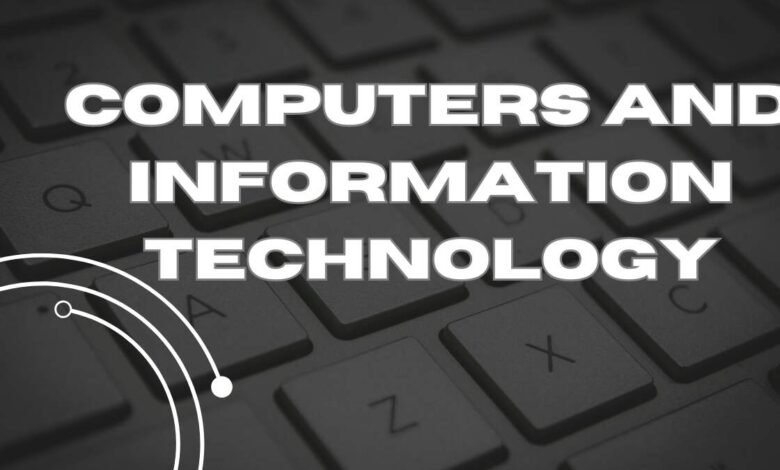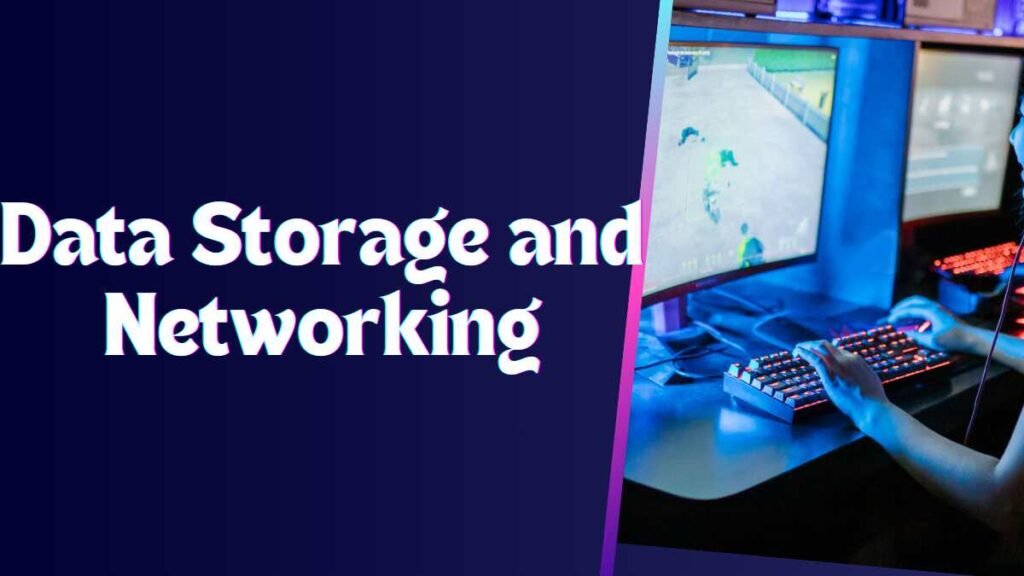Computers and Information Technology: Ultimate Overview

Computers and information technology (IT) have reshaped the world in ways we never imagined a few decades ago. From the rapid processing of data to the seamless integration of businesses globally, IT stands at the heart of this transformation. But within this vast domain, there are several key areas that professionals and enthusiasts alike must understand. In this article, we will delve into several critical topics, including cloud computing solutions, IT infrastructure management, cybersecurity in information technology, the software development lifecycle, and data storage and networking. Each of these areas plays a vital role in how we manage, develop, and protect our digital world.
Cloud Computing Solutions
Cloud computing has emerged as a revolutionary way to store, access, and manage data and applications over the internet rather than on local hardware. Businesses, governments, and individuals are increasingly turning to cloud services for their flexibility, scalability, and cost-effectiveness.
Benefits of Cloud Computing
The primary advantage of cloud computing is the ability to access data from anywhere in the world with an internet connection. Computers and information technology gone are the days when companies had to invest in expensive servers and infrastructure. With cloud solutions, organizations can rent the computing power they need and scale it as their operations grow. This reduces upfront costs and improves operational efficiency. Cloud computing also offers disaster recovery solutions, ensuring that companies don’t lose critical data in the event of a hardware failure or other emergencies. Additionally, cloud platforms like Amazon Web Services (AWS) and Microsoft Azure offer robust security measures, making it an ideal choice for sensitive information.
IT Infrastructure Management
Every organization, regardless of size, relies on a robust IT infrastructure to support its daily operations. IT infrastructure management involves the administration and management of key IT components such as hardware, software, networks, and data centers.
Key Components of IT Infrastructure
An organization’s IT infrastructure typically includes servers, data storage systems, networking devices, and software applications. Managing these components efficiently is crucial for ensuring that all business processes run smoothly.
Must Visit: Flex Frost
The Role of Automation in IT Management: Computers and Information Technology
As businesses grow, the manual management of infrastructure becomes increasingly difficult. Automation plays a significant role in IT infrastructure management by reducing the need for human intervention in routine tasks. Tools such as Ansible, Puppet, and Chef help IT teams manage configurations, deployments, and other operational tasks more efficiently. Automation also helps in improving consistency and minimizing errors, which in turn enhances system reliability and uptime. Furthermore, real-time monitoring tools provide IT professionals with insights into system performance, allowing them to detect and resolve issues before they escalate.
Cybersecurity in Information Technology

In today’s digital landscape, cybersecurity is no longer an afterthought but a necessity. With increasing reliance on digital technologies, the risk of cyber threats has grown exponentially.
The Importance of Cybersecurity: Computers and Information Technology
Cybersecurity encompasses a wide range of practices aimed at protecting computers, networks, and data from malicious attacks, unauthorized access, and damage. Data breaches and cyberattacks can result in severe financial losses and reputational damage for businesses, making cybersecurity one of the top priorities in the IT world.
Key Cybersecurity Practices
Effective cybersecurity practices include the use of firewalls, encryption, multi-factor authentication, and regular software updates. These measures help protect systems from vulnerabilities and ensure that data is kept secure from unauthorized access. Another important aspect is employee awareness. Many cyberattacks, such as phishing and social engineering attacks, target human vulnerabilities. Training employees to recognize suspicious activities and educating them on the importance of strong passwords are simple yet effective ways to bolster a company’s security.
Software Development Lifecycle
The software development lifecycle (SDLC) is a structured process that guides the development of software from the initial concept to deployment and maintenance. Understanding this process is essential for producing high-quality, reliable software.
Stages of the Software Development Lifecycle
The SDLC consists of several phases:
Requirement Gathering
This is the foundation of any software project, where the project requirements are defined.
Design: Computers and Information Technology
Once the requirements are clear, the design phase outlines how the software will work.
The Role of Agile and DevOps
In recent years, agile methodologies and DevOps have become popular in software development. These approaches emphasize collaboration between development and operations teams, shorter development cycles, and continuous testing and delivery. This reduces time to market and helps companies respond faster to customer needs and market changes.
Data Storage and Networking

Every organization, from small startups to global enterprises, generates massive amounts of data daily. Effective data storage and networking solutions are critical to managing this influx.
Modern Data Storage Solutions
Traditional storage solutions such as hard drives and tape storage are being replaced by cloud-based and solid-state drive (SSD) technologies. Cloud-based storage offers unlimited scalability and remote access, making it ideal for businesses with large data storage needs. SSDs, on the other hand, provide faster access times and improved performance over traditional hard drives. Data storage management also involves data backup and disaster recovery strategies to ensure that data remains safe and accessible, even in the event of hardware failure or cyberattacks.
Networking in IT: Computers and Information Technology
Networking is another crucial element in information technology. Without a reliable network infrastructure, data transmission between devices, servers, and users would be impossible. Companies rely on both local area networks (LANs) and wide area networks (WANs) to ensure smooth communication and data transfer. With the rise of remote work and cloud computing, network security has become a top priority. Securing networks through encryption, virtual private networks (VPNs), and firewalls helps ensure the safe transmission of data across various devices and locations.
Conclusion
Computers and information technology have transformed the way we work, communicate, and live. From the advent of cloud computing solutions that allow businesses to scale effortlessly to the importance of cybersecurity in protecting sensitive information, IT remains a cornerstone of modern society. The software development lifecycle helps streamline the creation of new digital tools, while data storage and networking ensure that our information is accessible and secure. As we continue to innovate and rely on IT, understanding these critical areas will not only help businesses remain competitive but also enable individuals to harness the full potential of technology in their daily lives.
FAQs
What are the critical advantages of distributed computing arrangements?
Cloud computing offers flexibility, scalability, cost savings, and disaster recovery options. It allows businesses to access and store data remotely without investing in expensive hardware.
How does IT infrastructure management support businesses?
IT infrastructure management ensures that all IT components, including hardware, software, and networks, function efficiently. This is vital for maintaining smooth business operations.
What is the role of cybersecurity in IT?
Cybersecurity protects systems and data from unauthorized access and malicious attacks, helping to prevent financial losses and reputational damage.
Why is the software development lifecycle important?
The SDLC provides a structured framework for developing software, ensuring that projects are delivered on time, within budget, and meet user requirements.
What are modern data storage solutions?
Modern data storage solutions include cloud storage and SSDs, offering scalable, faster, and more reliable alternatives to traditional storage methods.
Read More: Instagram Meta Business Suite




